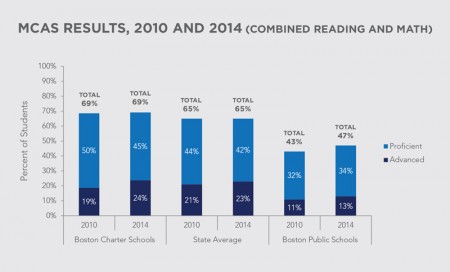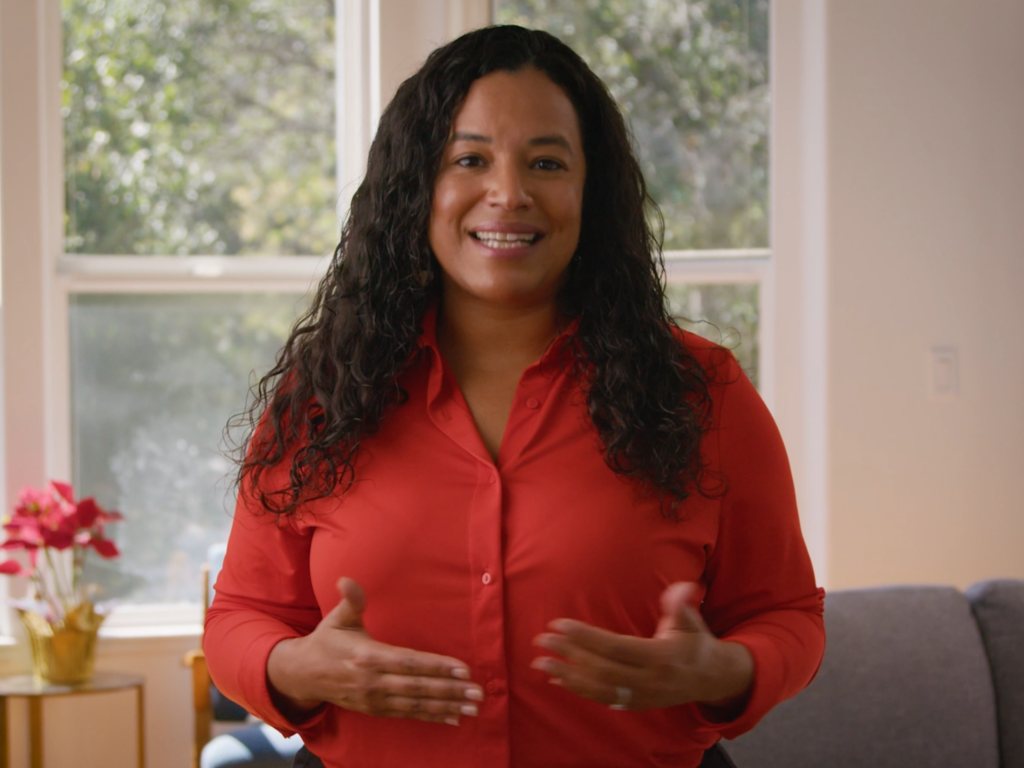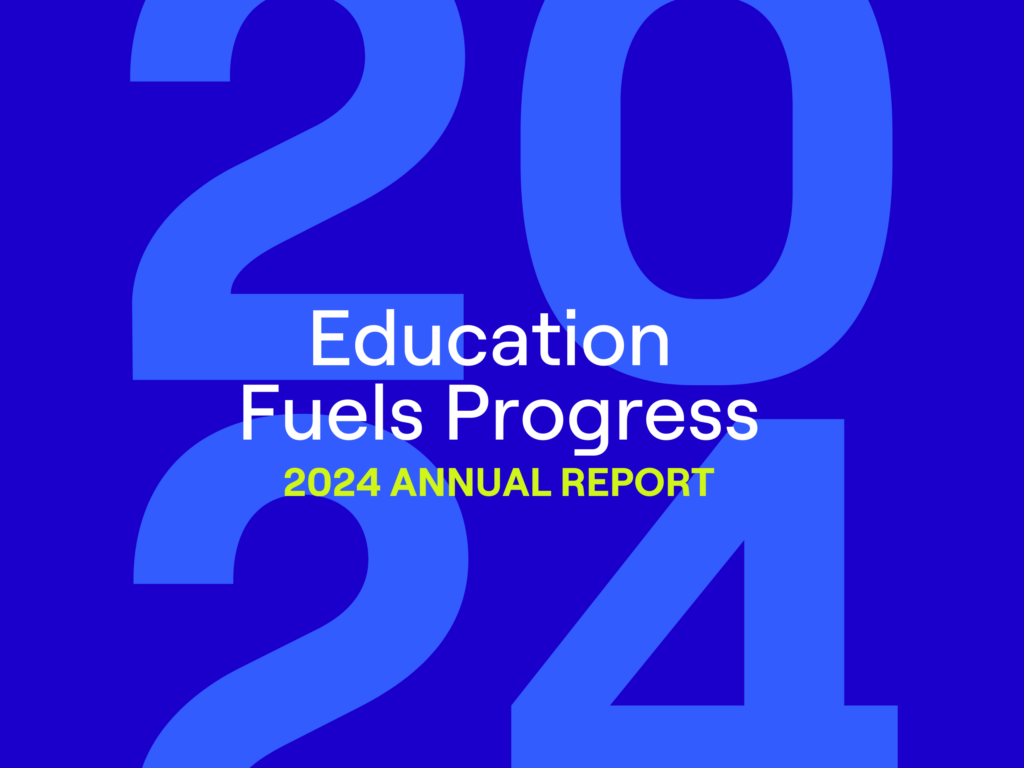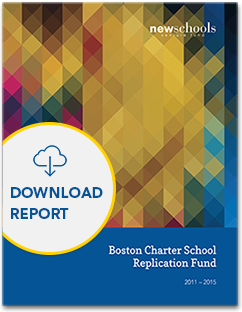 In 2011, NewSchools Venture Fund launched its four-year, $12 million Boston Charter School Replication Fund. Led by Jim Peyser, the Boston Fund has helped double the size of the nation’s highest-performing charter sector: by 2020, the Boston charter sector will serve nearly 11,000 students and one in four middle schoolers. Meanwhile, we have focused on building an ecosystem that can support the ongoing growth of quality schools.
In 2011, NewSchools Venture Fund launched its four-year, $12 million Boston Charter School Replication Fund. Led by Jim Peyser, the Boston Fund has helped double the size of the nation’s highest-performing charter sector: by 2020, the Boston charter sector will serve nearly 11,000 students and one in four middle schoolers. Meanwhile, we have focused on building an ecosystem that can support the ongoing growth of quality schools.
In order to capture the work we have done and the lessons we have learned – which we believe help articulate a vision for urban education reform that can inform future work in Boston and in other cities around the country – we have produced a report on the Boston Fund’s activities, results, and lessons learned. We are appreciative to Graham VanderZanden and Tiffany Lee for their work to produce the report, and to Maura Marino, Jim Peyser, and Will Austin for their review. Below we summarize some of the findings from the report. We hope that you will read the report and share it with your networks. We look forward to hearing your reflections on our experience in Boston!
Investing in Excellence
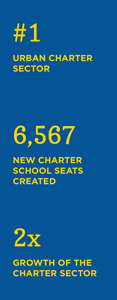 The Boston Charter School Replication Fund (“Boston Fund” for short) invested $12M to support the growth of a group of exceptionally high-performing charter school organizations: Brooke Charter Schools, City on a Hill, Excel Academy, KIPP Massachusetts, Match Charter Schools, Roxbury Prep (Uncommon Schools Boston), and UP Education Network. In 2010, most of these organizations were single-site charter schools; today, each charter network operates three or more schools. Along with a few other single-site charter schools in Boston, these seven networks have made the local charter sector the highest-performing sector in the country, according to Stanford’s CREDO.
The Boston Charter School Replication Fund (“Boston Fund” for short) invested $12M to support the growth of a group of exceptionally high-performing charter school organizations: Brooke Charter Schools, City on a Hill, Excel Academy, KIPP Massachusetts, Match Charter Schools, Roxbury Prep (Uncommon Schools Boston), and UP Education Network. In 2010, most of these organizations were single-site charter schools; today, each charter network operates three or more schools. Along with a few other single-site charter schools in Boston, these seven networks have made the local charter sector the highest-performing sector in the country, according to Stanford’s CREDO.
The Boston Fund has also helped develop an ecosystem that supports excellent schools. It has invested in key resources that are necessary for growth, such as growing the talent pipeline; supported district-charter collaboration, enabling greater enrollment equity across schools and sectors; and launched community engagement initiatives, increasing public support for policies that promote excellent schools. Collectively, these investments have positioned Boston for rapid change that benefits those students who have been traditionally most underserved within public schools.
Growth with Quality
Investments in quality schools and a supportive ecosystem have led to an intensive period of rapid growth. Support from the Boston Fund has helped add over 6,500 new charter school seats. This growth will help double Boston charter school enrollment, from about 9% of all public school enrollment in Boston in 2010, to about 18% in 2020. Simultaneous to this overall growth, high-need students are attending charter schools at increasing rates. Enrollment of low-income students, special education students, and English language learners have all increased as a percentage of total enrollment since 2010, with ELL enrollment increasing fivefold (from 2% to 10% of all charter school enrollment).
Boston’s charter sector has grown rapidly.
 *Projected.
*Projected.
High-need student enrollment has increased in all categories.

Boston’s charter schools have maintained high levels of quality throughout these changes. From 2010 through 2014, Boston charter schools have consistently outperformed local district and state averages on reading and math state assessments and in the rates at which graduates go on to college, especially 4-year college. These outcomes cannot be explained away as simple differences in enrollment between district and charter sectors. Rigorous research from MIT shows that attending a charter school actually changes the likelihood that any given student will achieve at a high level on MCAS, SAT, or AP tests, as well as improving that student’s chances of going to a 4-year college.
Student outcomes have remained strong. (Click image to enlarge)
Lessons Learned
The Boston Fund demonstrated that growing what works is an effective strategy to increase the number of high-quality seats. Philanthropic intermediaries can play an important role in helping establish the conditions for this growth with quality. These conditions include:
-
a critical mass of high-quality school operators;
-
pipelines for key resources, especially talent and buildings;
-
cross-school and -sector collaboration, to facilitate best-practice sharing and to address common needs;
-
a policy environment that supports quality schools; and
-
community engagement to ensure public demand for a supportive policy environment
 The Boston Fund’s experience especially highlights the importance of a strong policy environment and community support for quality schools. After the recent rapid growth of charter schools in Boston, nearly all charter school seats have been allocated under the current cap. This cap prevented Brooke Charter Schools, which operates possibly the highest-performing K-8 school in the state and has over 3,000 families on its waitlist, from receiving a charter for a fourth school in 2013. The state legislature had an opportunity to change this in 2014, but instead voted down legislation to incrementally increase the charter cap. Going forward, we believe that growing community support for quality schools and the increasing momentum among leaders at the state and local level to support quality and collaboration lends great promise to future opportunities for more charter school growth, and more students with access to high-quality schools.
The Boston Fund’s experience especially highlights the importance of a strong policy environment and community support for quality schools. After the recent rapid growth of charter schools in Boston, nearly all charter school seats have been allocated under the current cap. This cap prevented Brooke Charter Schools, which operates possibly the highest-performing K-8 school in the state and has over 3,000 families on its waitlist, from receiving a charter for a fourth school in 2013. The state legislature had an opportunity to change this in 2014, but instead voted down legislation to incrementally increase the charter cap. Going forward, we believe that growing community support for quality schools and the increasing momentum among leaders at the state and local level to support quality and collaboration lends great promise to future opportunities for more charter school growth, and more students with access to high-quality schools.
If you’d like to lend your voice, funds, or time to the effort to create more high-quality schools in Boston, we encourage you to follow the Massachusetts Charter Public School Association, Families for Excellent Schools, Democrats for Education Reform, and the Boston Schools Fund.
Read the detailed report on the Boston Fund

